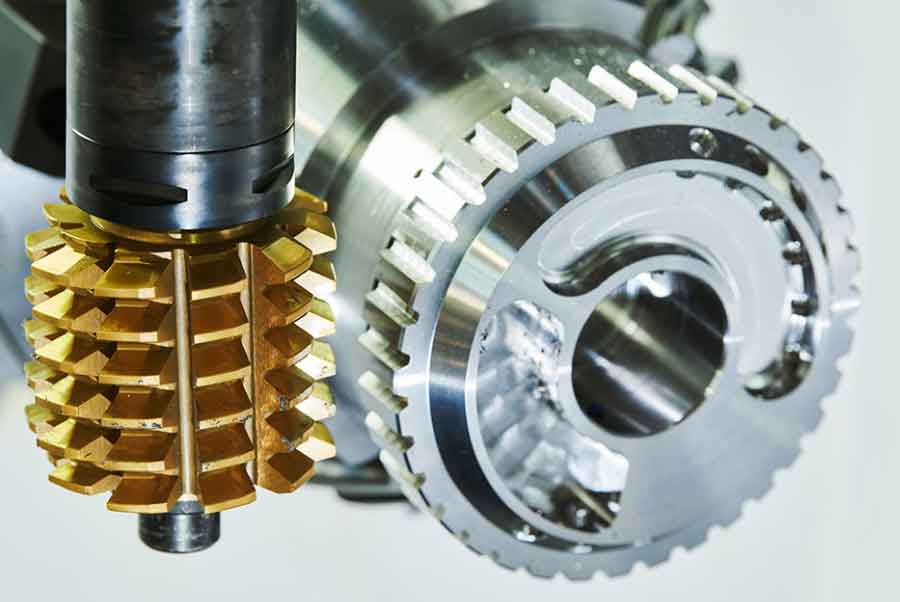Mastering gear hobbing techniques is crucial for achieving high-quality gear production. Here are some key techniques and factors to consider to optimize the gear hobbing process:

- Hob Selection: Choose the appropriate hob for the specific gear requirements. Consider factors such as the gear module, tooth profile, pressure angle, material, and production volume. Ensure that the hob’s design and specifications align with the desired gear parameters.
- Machine Setup: Proper machine setup is essential for accurate gear hobbing. Ensure that the machine is properly aligned, the workpiece is securely mounted, and the hob is positioned correctly relative to the workpiece. Alignment and synchronization between the hob and workpiece are crucial for achieving precise gear tooth generation.
- Cutting Parameters Optimization: Optimize cutting parameters to achieve the desired gear quality. Parameters such as hob speed, workpiece rotation speed, feed rate, and axial depth of cut should be carefully determined. Balancing cutting speed, feed rate, and depth of cut is crucial to achieve efficient material removal without compromising accuracy.
- Cooling and Lubrication: Use effective cooling and lubrication techniques during the hobbing process. Coolants and lubricants help dissipate heat, reduce friction, and flush away chips. Proper cooling and lubrication enhance tool life, surface finish, and dimensional accuracy of the gears.
- Tool Maintenance and Sharpening: Regularly inspect and maintain the hob to ensure optimal cutting performance. Sharpen the hob periodically to maintain sharp cutting edges. Dull or worn hob teeth can lead to poor gear quality, increased tool wear, and reduced cutting precision.
- Quality Control and Inspection: Implement rigorous quality control measures throughout the gear hobbing process. Utilize advanced inspection techniques, such as gear analyzers, coordinate measuring machines (CMM), or gear testers, to verify the tooth profile, tooth spacing, and dimensional accuracy of the gears. Regularly monitor and measure gear quality to ensure consistency and identify any deviations.
- Operator Training and Skill Development: Provide proper training to operators involved in gear hobbing. Equip them with the necessary knowledge and skills to operate the hobbing machine, interpret gear specifications, and perform quality control procedures. Skilled operators can make fine adjustments, troubleshoot issues, and ensure optimal gear production.
- Continuous Process Improvement: Embrace a culture of continuous improvement in gear hobbing. Regularly evaluate and analyze the gear production process, identify areas for improvement, and implement corrective actions. Encourage feedback and collaboration among operators, engineers, and quality control personnel to enhance gear production efficiency and quality.
By mastering these gear hobbing techniques, manufacturers can optimize the gear production process, achieve high-quality gears, and meet the stringent requirements of various industries. Continuous refinement and adherence to best practices will contribute to improved efficiency, reduced scrap rates, and enhanced customer satisfaction.
